This weeks how-to garden article and corresponding podcast are all about keeping your garden weed free. You might be thinking, is that really even possible?
The answer really is YES – it really is! And even better, it can be accomplished without doing a lot of extra work. In fact, as you will see today, you can keep your garden virtually weed free by following four simple steps.
What are the main issues with having weeds in your garden? For one thing, weeds can turn a gorgeous garden into an eyesore in just a matter of a few weeks. And once your garden gets a little bit out of control, it can be tempting to just ignore the weed issue altogether.
Be Sure To Listen To Our Podcast On How To Have A Weed Free Garden:
Not only are weeds an issue visually, but they compete with your plants for the same vital resources your plants need. Resources such as water, nutrients, light, and oxygen. Losing some of these resources to weeds can impact the health of your plants. And more importantly, greatly effect yields!
In addition, weeds can become an easy home to pests and unwanted insects that can cause major destruction to your vegetables and flowers.
Thankfully, you really can have a weed free garden – and it really is easier than you could ever imagine!
4 Simple Steps To Success For A Weed Free Garden
#1 Stop Tilling and Hoeing
Yep, you read that right. Most weed issues in the garden are actually a result of by working the soil too much and actually “planting” the seeds.
The start of the issue begins in the spring when you pull out the tiller. All winter long, your garden has been exposed to weed seeds that have blown in, fallen off of your late fall garden plants, or have even been dropped from wildlife. Those seeds are just lying dormant on top of the soil, waiting to be turned over and planted.
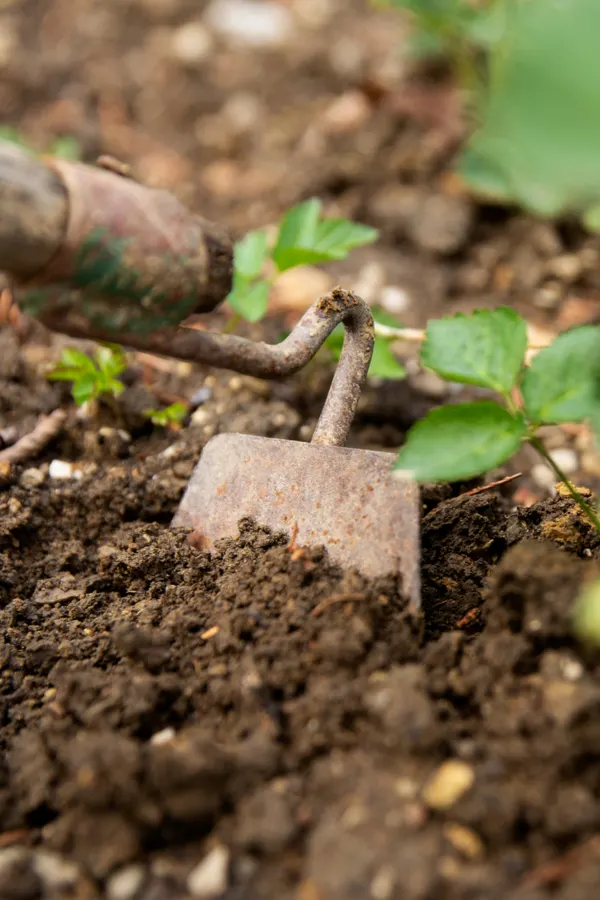
When you use a tiller, rake, hoe, or even simply dig in the garden soil, you are actually turning the soil and unknowingly “planting” those weed seeds.
Do you bring out your tiller in the middle of the growing season to work up those walking rows? Again, you are turning the soil over and planting even more weed seeds.
In addition to planting weed seeds, tilling also break up the soil structure and creates a greater loss of moisture. Tilled soil also has a greater rate of compaction as well. Basically, the more you disturb the soil, the more detrimental it will be to your planting areas.
#2 The Bare Soil Problem – Why Mulch Is The Answer!
Bare Soil = Big Garden Trouble!
Keeping a weed-free garden begins with keeping weed seeds from ever finding a permanent home in the soil. And that means using mulch. Bare soil allows blowing and drifting weed seeds to find a home.
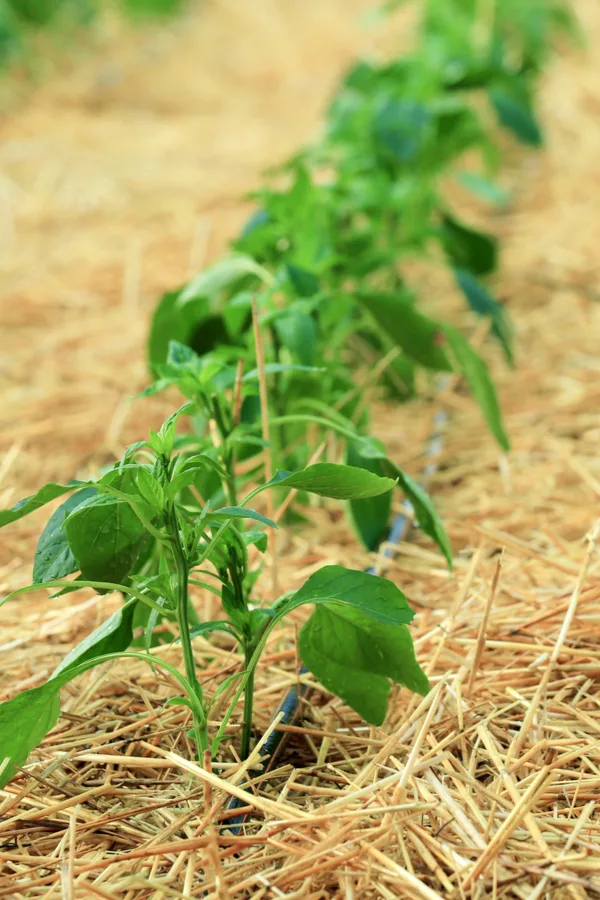
But when you use mulch to protect the soil, you keep those future weed seeds from ever becoming established. In fact, using mulch eliminates the need from ever having to use a rototiller in your garden ever again. But the advantages don’t stop there!
A heavy layer of mulch also suppresses existing weeds and weed seeds that are already established in the soil. Not only that, but mulch even helps insulate and protect the plants and vegetables you DO want in your garden.
Keeping The Garden Covered Year Round
Using a combination of mulch in your garden works best for keeping the soil covered year round. If you are using the raised row gardening method, you will have specific walking rows and growing rows.
Use a heavy 4 to 6 inch layer of mulch in your walking rows. Items like shredded bark or whole leaves work perfectly. In your growing rows, use a 2 to 4 inch layer of mulch such as straw, shredded leaves, untreated grass clippings, or a combination of the three.
The added benefits of using mulch around your plants go beyond just protecting from weeds though. This practice also helps to regulate the soil’s temperature and retain moisture – both of which are huge factors in helping your vegetable plants thrive.
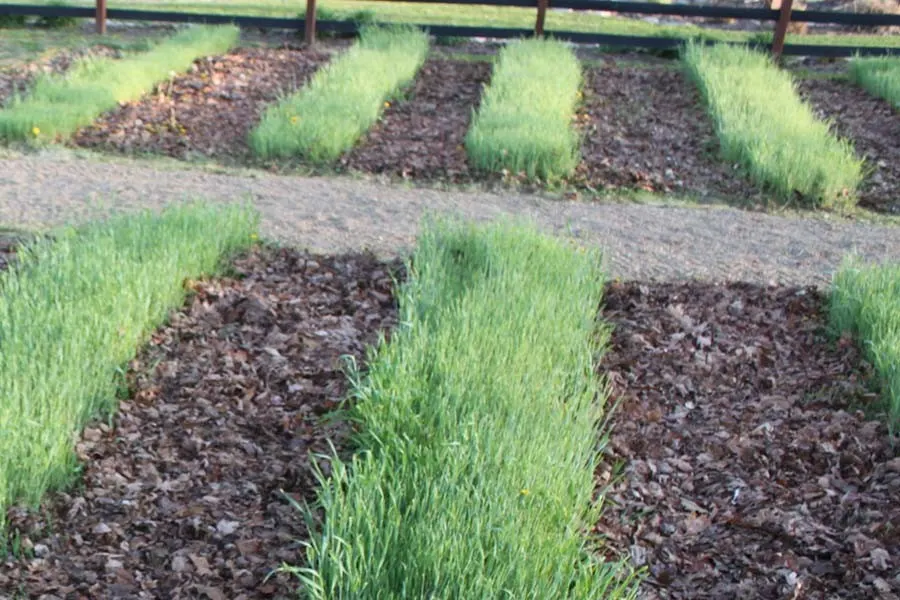
Just make sure to avoid using hay or straw that still has the seed heads attached. Unfortunately, they can create a headache all on their own by “planting” new seeds in your garden.
During the late fall through early spring, consider using a cover crop to keep the soil protected. This works as both a protective cover from winter erosion, and as a live mulch over your bare soil.
Using mulch in this manner will lead to fewer and fewer weeds every year and minimal maintenance. In fact, the year-round approach of covering bare soil all but eliminates weeds from ever establishing in large numbers again!
#3 Be Consistent
If there is one thing that can keep your garden weed-free, it is consistency. As in being consistent in checking on it as often as you can.
Being out in your garden once a week for 70 minutes isn’t the same as going out to your garden each day for 10 minutes or so. It’s amazing how quickly issues can multiply in just a few days’ time, and that includes the growth of weeds.
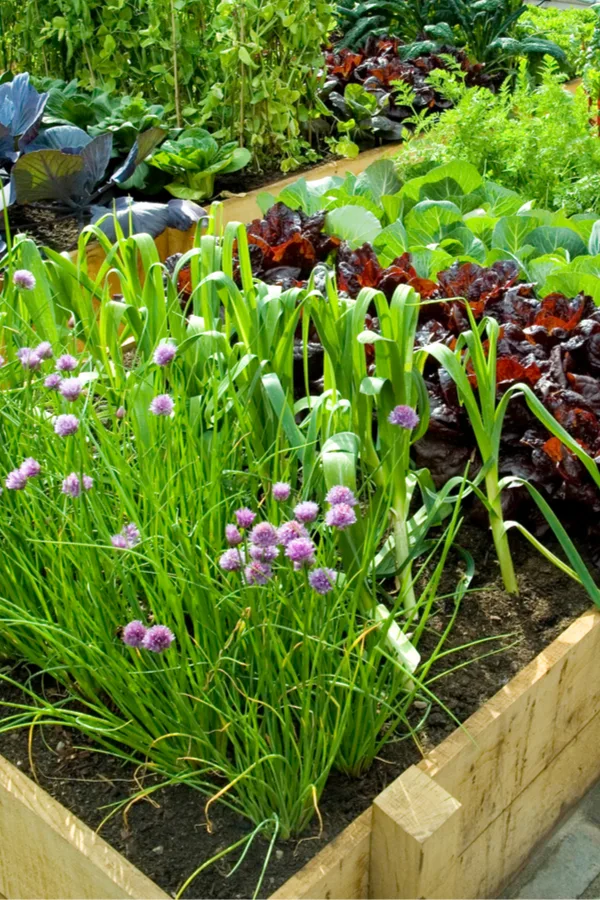
It doesn’t have to be for long periods of time either. Aim for spending 5 to 10 minutes daily in your garden. This little bit of time allows to take care of any small issues with a weed here or there before it becomes a big issue. It is much better to be consistent with your garden maintenance than trying to do a whole lot of care all at once.
#4 Using A Fall Cover Crop
Cover crops are the ultimate answer to weeds. Not only do they help to protect and revive the garden soil after a long growing season, but they also prevent weed seeds from finding a home in your bare soil.
After the plants are done growing in the fall, clean up your growing rows and plant a cover crop. Annual Rye (often called winter rye or cereal rye) is a popular choice. It also happens to be very easy to sow and grow.
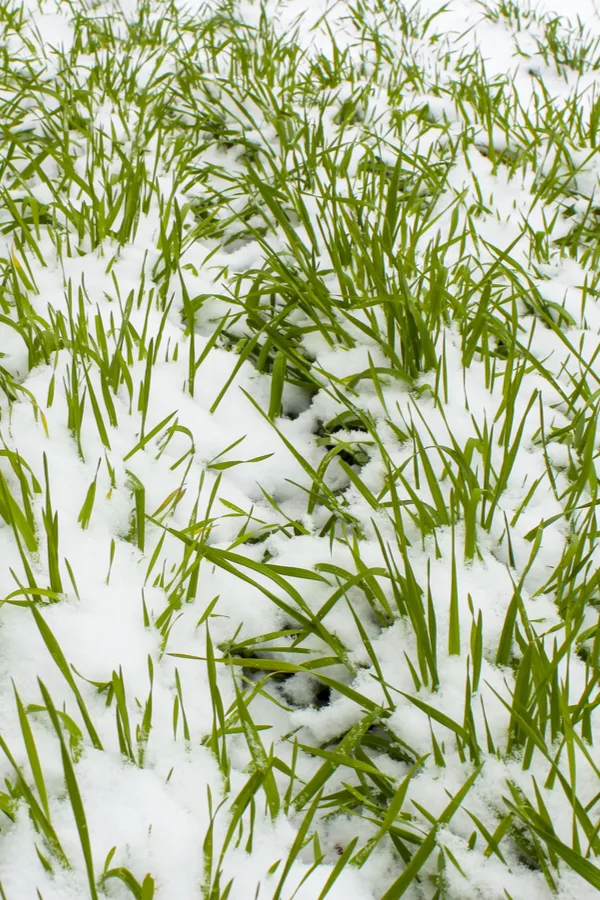
The cover crop will begin to grow in the late fall, as the garden season ends. By covering the soil, it keeps any fall weeds or weed seeds from taking hold. During the winter, the crop goes dormant. However, it will still protect the soil from the wind, rain, snow, and weed seeds.
Once the weather starts to warm up again in early spring, the cover crop will start to grow again. Mow the cover crop off when you are ready to plant, and it becomes organic mulch for your growing rows. It’s effortless compared to tilling, and keeps the soil continually covered.
You can find much more details on using a cover crop in your garden in this article, “How To Grow A Fall Cover Crop“. To learn specifically about growing annual rye, check out “How To Plant Annual Rye”.
To Conclude…
Having a garden that is weed free doesn’t have to be time consuming or difficult to achieve. By taking a few simple steps and changing the way you handle the garden soil, you can enjoy a virtually weed free no-till garden that just keeps getting easier to manage as the years go by.
Simple Garden Life is a website dedicated to keeping gardening fun, simple and enjoyable! We publish two new articles each week along with a new garden podcast episode every two weeks.
